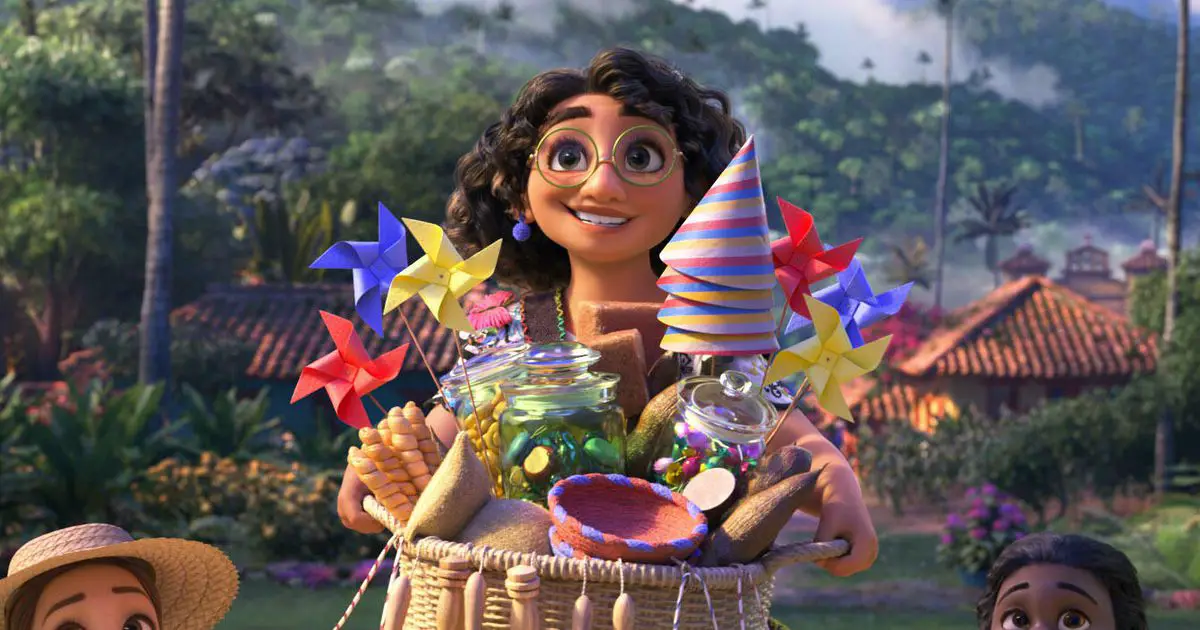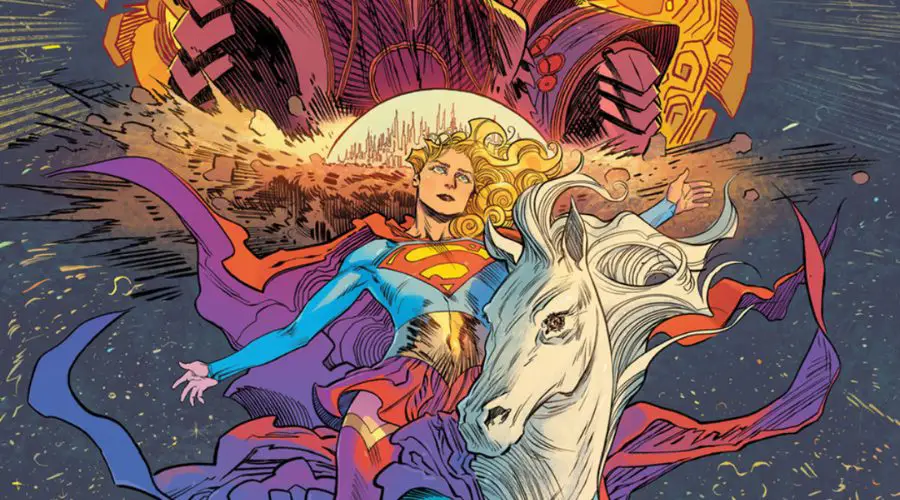Walt Disney Animation Studios’ latest animated offering, Encanto, released this Thanksgiving week to screen to families of all kinds looking to enjoy a colorful musical for the kids. It delivers exactly that. But does it actually do anything else?
Set in the countryside of Colombia, Encanto follows Mirabel (Stephanie Beatriz), the non-magical member of the fantastical familia Madrigal. The Madrigals live in a secluded oasis, a haven they were blessed with when their grandmother was ripped away from her home. Magic thrives within the paradise of Encanto, as each Madrigal receives a gift when they come of age. Except for Mirabel, whose gift ceremony ended in the girl receiving no magical ability. She becomes othered, her efforts minimized by her lack of a gift. Until everyone else’s magic begins to fade. It’s down to Maribel’s dedication to her family to save the magic.
Encanto depicts the dynamic of a multi-generational home, Mirabel excitedly introducing us to their world in the first few minutes. We are immediately whisked away to a vibrant festival of color, dancing, and food. Each family member gets an introduction, letting us know that this is not a two dimensional portrait of diversity. Everyone has a name, purpose, and motivation. The animation is so sharp, it could cut week-old pan de agua. This film has the gorgeous puzzle pieces set, but do they fit together all the time?
READ: ‘Clifford the Big Red Dog’ Review: “Content First, Entertainment Dead Last”
The household is a matriarchal society, as is tradition with many Latin American families. Abuela Madrigal (María Cecilia Botero) is always at the head of the table, her authority ever present. Encanto initially explores the pressures of being the “weird” one of the family through Mirabel. She’s a kind girl who wants nothing more than to be of service to her family and make them proud. As the magical casita begins to crumble, so do the Madrigals. We see how Mirabel isn’t the only one buckling under the pressure of Abuela Madrigal’s expectations.
Slowly but surely, our heroine not only uncovers the mystery of the fading powers of their home, but also discovers the cracks in her family’s relationships. There is a brighter focus on Mirabel’s older sisters, the perfect eldest daughter Isabela and the strong second eldest daughter Luisa. The different anxieties each sister goes through put their roles into great perspective. The film drives home family values and breaking toxic emotional dynamics that affect Latin American culture today.
In spite of beautiful scenery and tender character work, the film feels disjointed when it transitions into some musical sequences. There are a few hits that work exceptionally well, both visually and musically. However, some songs in between feel disconnected in tone from the main story. Lin-Manuel Miranda, who previously collaborated on Disney’s Moana, has written some acutely emotional lyrics here. However, it feels like with such a broad slate of projects in one year (Vivo, In The Heights, Tick, Tick…Boom!), we might be suffering a bit of Miranda fatigue. His iconic style feels repetitive here, acting as filler in between the few exceptional songs. Dos Oruguitas, his first completely Spanish language song, is bound to be on the road for an Academy Award nomination, if not the win.
What doesn’t immediately click about this film is the way it was framed to be a magical adventure story rather than a family values one. This doesn’t diminish the film in any way. However, the tone makes believe that the heroine is about to embark on a journey to find the truth about the magic that has blessed her family for generations. In reality, it subverts this trope and instead follows a girl on a quest to simply keep her family together. The pressure to make Abuela Madrigal proud as something more important than anything feels incredibly relatable. The film cuts deep with its emotional themes, particularly resonating with eldest Latina daughters such as myself.
Truly, the film’s biggest problem is the clear disconnect from the creators who are not majority Latine (much less Colombian). The most Colombian aspect of the film is merely the setting, blending into the background with little narrative significance. It does not always feel specific to any particular Latin American culture. The stunning animation still displays a fantastical world of color and dance. The film’s highlight? The unapologetic use of Spanish within the dialogue throughout the whole movie. Not only is the scenery visually diverse, but so are the characters. The representation of how a Latine can look like breaks a mold that often overlooks afro-Latine people.
Encanto‘s strength lies in its gorgeous array of characters that allow a wider range of Latine children to see themselves on the big screen. The rhythmic songs grow on you, carried by some of the best animated musical sequences to release in the last few years. Despite it feeling inevitably commercialized at times, the central theme of the story rings strong and true. The importance of seeing our stories continue to be authentically represented in media is still ever present, but Encanto is one leap forward in doing so. – Ileana Meléndez
Rating: 7/10
Encanto is playing now in theaters.
The film stars Stephanie Beatriz, John Leguizamo, Diane Guerrero, María Cecilia Botero, and Jessica Darrow.




/cdn.vox-cdn.com/uploads/chorus_asset/file/22885623/ENCANTO_ONLINE_USE_240.0_018.00_0001_copy.jpg)




Leave a Comment